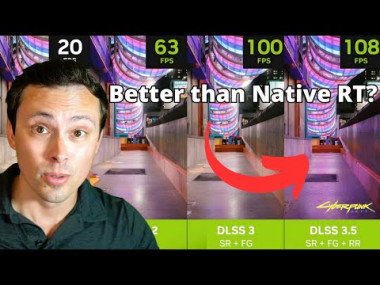Nvidia announces DLSS 3.5 "Ray Reconstruction" for all RTX-branded cards
Replacing the usual denoising algorithms used to generate an image from the (usually small) number of traced rays in a scene with a new AI model that runs alongside DLSS upscaling, Nvidia is able to show ray traced reflections and shadows with less artifacts, significantly improved clarity, and more data points being represented (like soft shadows and small occlusions) at no penalty to performance.
Unlike frame generation, DLSS 3.5’s ray reconstruction will work on all RTX series cards, including the 2000 series. In one example, Nvidia shows how fast moving objects no longer leave trails of temporal artifacts when RT global illumination is enabled.


Add comment